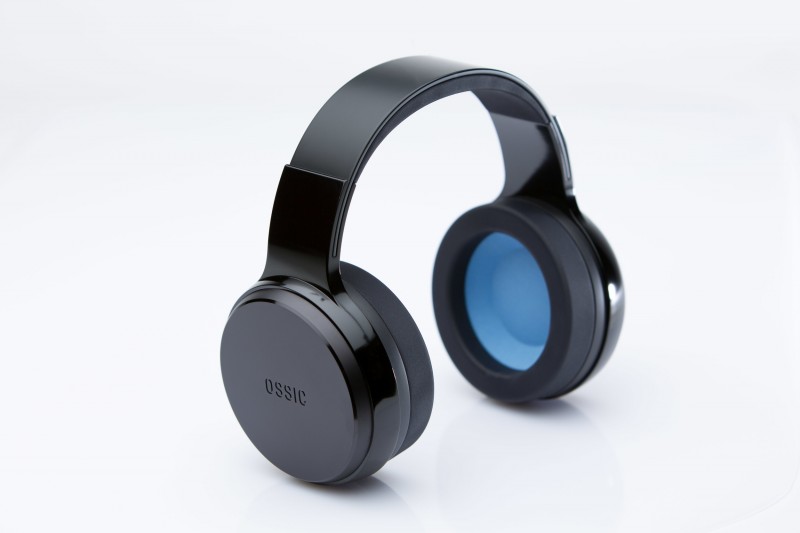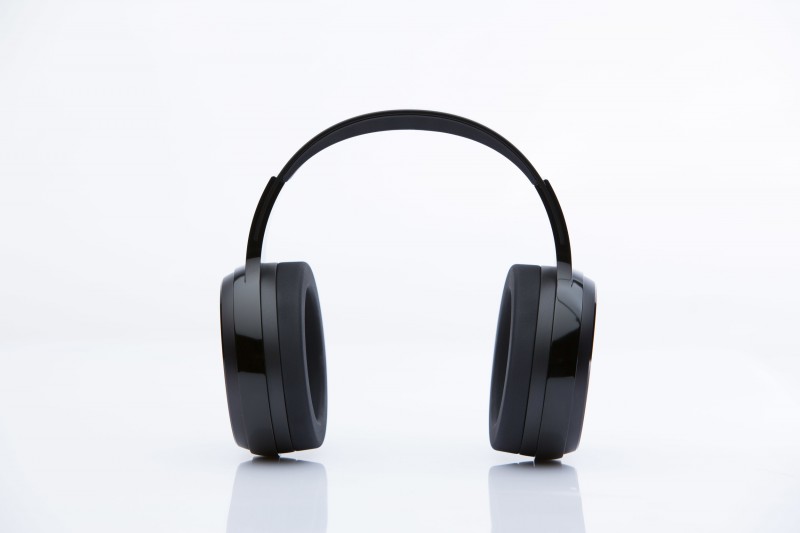Ossic 3D Audio Headset Is Poised To Change How We Hear Gaming, Music, And Film

When we talk about gaming innovations, we often discuss visual improvements, new input modalities, and social features. One area tends to get the short shrift, though. Let’s talk about audio.
There have been significant technical innovations in sound over the past five years, with gaming headsets becoming more affordable and therefore widely used. Most use two drivers (speakers), producing stereo or simulated surround-sound audio using Dolby IIx or DTS algorithms.
Ossic is taking that a number of steps further with a 3D audio solution that is likely to revolutionize both casual and professional gaming. The differences start with adapting the audio to individual users’ heads.
The headset senses the size of your skull. Ossic’s software package calculates and adapts for the distance between your ears and takes into account the different timing for sound hitting each of them. This handles the mid and low frequencies, creating a more realistic soundscape.
There are four drivers in each ear that handle the high frequencies. These use beam-forming technology to change the angle in which the sound bounces off your ear, helping to created verticality and pinpoint positioning for multiple objects in the soundspace.

Ossic’s headset completes the immersion with head-tracking. If you’re using Rift or Vive, it taps into the sensors you already have (but also supports a standalone sensor). A short VR demo with HTC’s hardware was most impressive.
I’ve done a number of VR demos over the past few years, and the immersion is getting more authentic as developers have more time with the technology. This brief experience was, by far, one of the best senses of presence I’ve had, because of the audio. I could easily pick out exactly where sounds were coming from in a small room filled with mystical artifacts. Early on, a merchant opens the creaky door before giving visitors the means to explore his wares.
The Vive was tuned for an exceedingly small bounding box, and I couldn’t move around much. Despite the wall warnings (blue grids that signify obstacles in the real world) popping up, the small cabin filled with magic objects, swords, and strange creatures felt much larger. I was able to home in quickly on discreet items and animals moving and changing in the environment.
The application for gaming is obvious. Currently, players in competitive first-person shooters need to change their character orientation to adjust the soundscape. With head tracking and 3D audio, players need only tilt their head to get a better listen in a new direction. Figuring out where gunfire is localized, and being able to more easily sense sounds above and below thanks to the spherical approach to the soundscape has the potential to significantly improve reaction times.
The headset includes a six-part beam formed microphone array. The company claims that it has the same noise rejection as a boom microphone, but without the positional finickiness of one. For those that use gaming headsets, you might find that you have to readjust the boom so you can be heard. A bit out of position, and your levels change. That isn’t the case here according to the company, though we didn’t get a chance to test that ourselves.

There are music and film applications, also. I listened to two audio tracks that sold the implementation for passive entertainment. Pink Floyd’s “Money” and “Time” both start with environmental sounds. Using a standard 5.1 mix, it felt like the audio was happening all around me instead of being piped into my ears from a headset.
I was able to switch between 3D and stereo at will, and the difference was staggering. Ossic hopes that musicians will eventually create unique mixes for 3D audio and that VR remote-concert attendance can be enhanced by incorporating the approach.
A variety of cables will allow users to plug into most devices. For PC users, a USB-C cable is all that will be necessary. Ossic will be shipping with a 3.5mm cable to plug into any headphone jack, and likely mobile-focused micro-USB and Lightning cables to get better sound on the go.
The company, which is composed of former Logitech headset developers, is currently raising money on Kickstarter. The campaign has reached nearly $1.6 million against its modest $100,000 goal at time of publication.
If you back the project, you can get a headset in early 2017 for $249. For those who decide to wait until retail, units are planned to be widely available later in the first quarter of 2017, you can expect to pay around $399 (competitive with the highest tier of gaming headsets currently available).

Get the Game Informer Print Edition!
Explore your favorite games in premium print format, delivered to your door.
- 10 issues per year
- Only $4.80 per issue
- Full digital magazine archive access
- Since 1991







